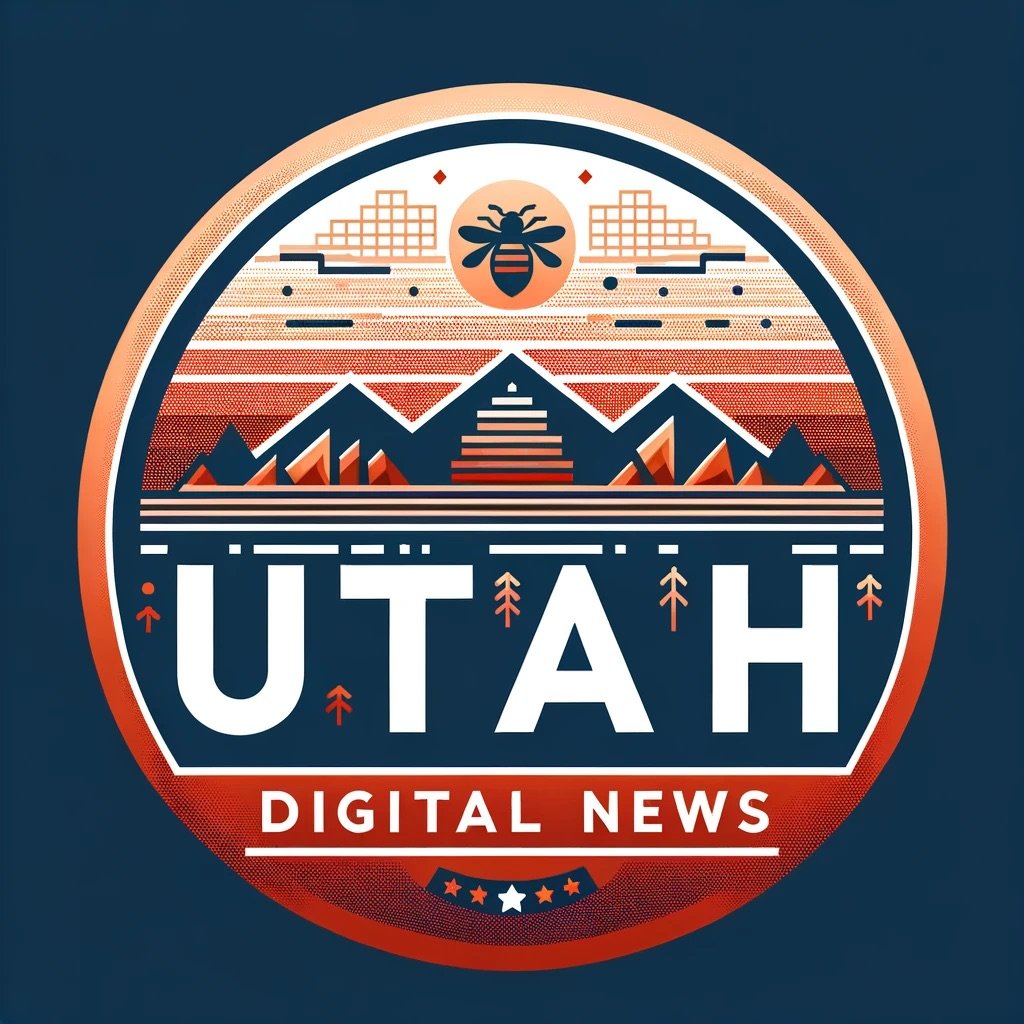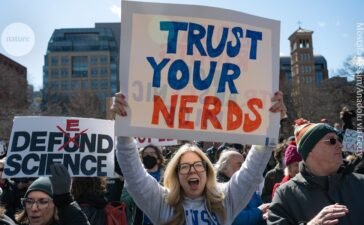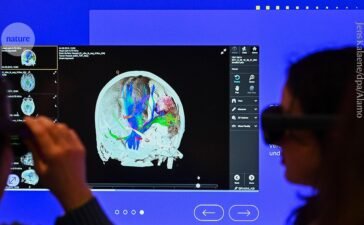Post-January 6th deplatforming reduced the reach of misinformation on Twitter

Lazer, D. The rise of the social algorithm. Science 348, 1090–1091 (2015).
Jhaver, S., Boylston, C., Yang, D. & Bruckman, A. Evaluating the effectiveness of deplatforming as a moderation strategy on Twitter. Proc. ACM Hum.-Comput. Interact. 5, 381 (2021).
Broniatowski, D. A., Simons, J. R., Gu, J., Jamison, A. M. & Abroms, L. C. The efficacy of Facebook’s vaccine misinformation policies and architecture during the COVID-19 pandemic. Sci. Adv. 9, eadh2132 (2023).
Hughes, A. G. et al. Using administrative records and survey data to construct samples of tweeters and tweets. Public Opin. Q. 85, 323–346 (2021).
Shugars, S. et al. Pandemics, protests, and publics: demographic activity and engagement on Twitter in 2020. J. Quant. Descr. Digit. Media https://doi.org/10.51685/jqd.2021.002 (2021).
Imbens, G. W., & Lemieux, T. Regression discontinuity designs: a guide to practice. J. Econom. 142, 615–635 (2008).
Gerber, A. S. & Green, D. P. Field Experiments: Design, Analysis, and Interpretation (W.W. Norton, 2012).
Grinberg, N., Joseph, K., Friedland, L., Swire-Thompson, B. & Lazer, D. Fake news on Twitter during the 2016 U.S. presidential election. Science 363, 374–378 (2019).
Munger, K. & Phillips, J. Right-wing YouTube: a supply and demand perspective. Int. J. Press Polit. 27, 186–219 (2022).
Guess, et al. How do social media feed algorithms affect attitudes and behavior in an election campaign? Science 381, 398–404 (2023).
Persily, N. in New Technologies of Communication and the First Amendment: The Internet, Social Media and Censorship (ed. Bollinger L. C. & Stone, G. R.) (Oxford Univ. Press, 2022).
Sevanian, A. M. Section 230 of the Communications Decency Act: a ‘good Samaritan’ law without the requirement of acting as a ‘good Samaritan’. UCLA Ent. L. Rev. https://doi.org/10.5070/LR8211027178 (2014).
Lazer, D. M. J. et al. The science of fake news. Science 359, 1094–1096 (2018).
Suzor, N. Digital constitutionalism: using the rule of law to evaluate the legitimacy of governance by platforms. Soc. Media Soc. 4, 2056305118787812 (2018).
Napoli, P. M. Social Media and the Public Interest (Columbia Univ. Press, 2019).
DeNardis, L. & Hackl, A. M. Internet governance by social media platforms. Telecomm. Policy 39, 761–770 (2015).
TwitterSafety. An update following the riots in Washington, DC. Twitter https://blog.x.com/en_us/topics/company/2021/protecting–the-conversation-following-the-riots-in-washington– (2021).
Twitter. Civic Integrity Policy. Twitter https://help.twitter.com/en/rules-and-policies/election-integrity-policy (2021).
Promoting safety and expression. Facebook https://about.facebook.com/actions/promoting-safety-and-expression/ (2021).
Dwoskin, E. Trump is suspended from Facebook for 2 years and can’t return until ‘risk to public safety is receded’. The Washington Post https://www.washingtonpost.com/technology/2021/06/03/trump-facebook-oversight-board/ (4 June 2021).
Huszár, F. et al. Algorithmic amplification of politics on Twitter. Proc. Natl Acad. Sci. USA 119, e2025334119 (2021).
Guess, A. M., Nyhan, B. & Reifler, J. Exposure to untrustworthy websites in the 2016 US election. Nat. Hum. Behav. 4, 472–480 (2020).
Sunstein, C. R. #Republic: Divided Democracy in the Age of Social Media (Princeton Univ. Press, 2017).
Timberg, C., Dwoskin, E. & Albergotti, R. Inside Facebook, Jan. 6 violence fueled anger, regret over missed warning signs. The Washington Post https://www.washingtonpost.com/technology/2021/10/22/jan-6-capitol-riot-facebook/ (22 October 2021).
Chandrasekharan, E. et al. You can’t stay here: the efficacy of Reddit’s 2015 ban examined through hate speech. Proc. ACM Hum. Comput. Interact. 1, 31 (2017).
Matias, J. N. Preventing harassment and increasing group participation through social norms in 2,190 online science discussions. Proc. Natl Acad. Sci. USA 116, 9785–9789 (2019).
Yildirim, M. M., Nagler, J., Bonneau, R. & Tucker, J. A. Short of suspension: how suspension warnings can reduce hate speech on Twitter. Perspect. Politics 21, 651–663 (2023).
Guess, A. M. et al. Reshares on social media amplify political news but do not detectably affect beliefs or opinions. Science 381, 404–408 (2023).
Nyhan, B. et al. Like-minded sources on Facebook are prevalent but not polarizing. Nature 620, 137–144 (2023).
Dang, S. Elon Musk’s X restructuring curtails disinformation research, spurs legal fears. Reuters https://www.reuters.com/technology/elon-musks-x-restructuring-curtails-disinformation-research-spurs-legal-fears-2023-11-06/ (6 November 2023).
Duffy, C. For misinformation peddlers on social media, it’s three strikes and you’re out. Or five. Maybe more. CNN Business https://edition.cnn.com/2021/09/01/tech/social-media-misinformation-strike-policies/index.html (1 September 2021).
Conger, K. Twitter removes Chinese disinformation campaign. The New York Times https://www.nytimes.com/2020/06/11/technology/twitter-chinese-misinformation.html (11 June 2020).
Timberg, C. & Mahtani, S. Facebook bans Myanmar’s military, citing threat of new violence after Feb. 1 coup. The Washington Post https://www.washingtonpost.com/technology/2021/02/24/facebook-myanmar-coup-genocide/ (24 February 2021).
Barry, D. & Frenkel, S. ‘Be there. Will be wild!’: Trump all but circled the date. The New York Times https://www.nytimes.com/2021/01/06/us/politics/capitol-mob-trump-supporters.html (6 January 2021).
Timberg, C. Twitter ban reveals that tech companies held keys to Trump’s power all along. The Washington Post https://www.washingtonpost.com/technology/2021/01/14/trump-twitter-megaphone/ (14 January 2021).
Dwoskin, E. & Tiku, N. How Twitter, on the front lines of history, finally decided to ban Trump. The Washington Post https://www.washingtonpost.com/technology/2021/01/16/how-twitter-banned-trump/ (16 January 2021).
Harwell, D. New video undercuts claim Twitter censored pro-Trump views before Jan. 6. The Washington Post https://www.washingtonpost.com/technology/2023/06/23/new-twitter-video-jan6/ (23 June 2023).
Romm, T. & Dwoskin, E. Twitter purged more than 70,000 accounts affiliated with QAnon following Capitol riot. The Washington Post https://www.washingtonpost.com/technology/2021/01/11/trump-twitter-ban/ (11 January 2021).
Denham, H. These are the platforms that have banned Trump and his allies. The Washington Post https://www.washingtonpost.com/technology/2021/01/11/trump-banned-social-media/ (13 January 2021).
Graphika Team. DisQualified: network impact of Twitter’s latest QAnon enforcement. Graphika Blog https://graphika.com/posts/disqualified-network-impact-of-twitters-latest-qanon-enforcement/ (2021).
Dwoskin, E. & Timberg, C. Misinformation dropped dramatically the week after Twitter banned Trump and some allies. The Washington Post https://www.washingtonpost.com/technology/2021/01/16/misinformation-trump-twitter/ (16 January 2021).
Harwell, D. & Dawsey, J. Trump is sliding toward online irrelevance. His new blog isn’t helping. The Washington Post https://www.washingtonpost.com/technology/2021/05/21/trump-online-traffic-plunge/ (21 May 2021).
Olteanu, A., Castillo, C., Boy, J. & Varshney, K. The effect of extremist violence on hateful speech online. In Proc. 12th International AAAI Conference on Web and Social Media https://doi.org/10.1609/icwsm.v12i1.15040 (ICWSM, 2018).
Lin, H. et al. High level of correspondence across different news domain quality rating sets. PNAS Nexus 2, gad286 (2023).
Abilov, A., Hua, Y., Matatov, H., Amir, O., & Naaman, M. VoterFraud2020: a multi-modal dataset of election fraud claims on Twitter.” Proc. Int. AAAI Conf. Weblogs Soc. Media 15, 901–912 (2021).
Calonico, S., Cattaneo, M. D. & Titiunik, R. Robust nonparametric confidence intervals for regression-discontinuity designs. Econometrica 82, 2295–2326 (2014).
Jackson, S., Gorman, B. & Nakatsuka, M. QAnon on Twitter: An Overview (Institute for Data, Democracy and Politics, George Washington Univ. 2021).
Shearer, E. & Mitchell, A. News use across social media platforms in 2020. Pew Research Center https://www.pewresearch.org/journalism/2021/01/12/news-use-across-social-media-platforms-in-2020/ (2021).
McGregor, S. C. Social media as public opinion: How journalists use social media to represent public opinion. Journalism 20, 1070–1086 (2019).
Hammond-Errey, M. Elon Musk’s Twitter is becoming a sewer of disinformation. Foreign Policy https://foreignpolicy.com/2023/07/15/elon-musk-twitter-blue-checks-verification-disinformation-propaganda-russia-china-trust-safety/ (15 July 2023).
Joseph, K. et al. (Mis)alignment between stance expressed in social media data and public opinion surveys. Proc. 2021 Conference on Empirical Methods in Natural Language Processing 312–324 (Association for Computational Linguistics, 2021).
Robertson, R. E. et al. Auditing partisan audience bias within Google search. Proc. ACM Hum. Comput. Interact. 2, 148 (2018).
McCrary, J. Manipulation of the running variable in the regression discontinuity design: a density. Test 142, 698–714 (2008).
Roth, J., Sant’Anna, P. H. C., Bilinski, A. & Poe, J. What’s trending in difference-in-differences? A synthesis of the recent econometrics literature. J. Econom. 235, 2218–2244 (2023).
Wing, C., Simon, K. & Bello-Gomez, R. A. Designing difference in difference studies: best practices for public health policy research. Annu. Rev. Public Health 39, 453–469 (2018).
Baker, A. C., Larcker, D. F. & Wang, C. C. Y. How much should we trust staggered difference-in-differences estimates? J. Financ. Econ. 144, 370–395 (2022).
Callaway, B. & Sant’Anna, P. H. C. Difference-in-differences with multiple time periods. J. Econom. 225, 200–230 (2021).
R Core Team. R: A Language and Environment for Statistical Computing, v.4.3.1. https://www.R-project.org/ (2023).
rdrobust: Robust data-driven statistical inference in regression-discontinuity designs. https://cran.r-project.org/package=rdrobust (2023).
Calonico, S., Cattaneo, M. D. & Titiunik, R. Optimal data-driven regression discontinuity plots. J. Am. Stat. Assoc. 110, 1753–1769 (2015).
Calonico, S., Cattaneo, M. D. & Farrell, M. H. On the effect of bias estimation on coverage accuracy in nonparametric inference. J. Am. Stat. Assoc. 113, 767–779 (2018).
Zeileis, A. & Hothorn, T. Diagnostic checking in regression relationships. R News 2, 7–10 (2002).
Cameron, A. C., Gelbach, J. B. & Miller, D. L. Robust inference with multiway clustering. J. Bus. Econ. Stat. 29, 238–249 (2011).
Zeileis, A. Econometric computing with HC and HAC covariance matrix estimators. J. Stat. Softw. https://doi.org/10.18637/jss.v011.i10 (2004).
Eckles, D., Karrer, B. & Johan, U. Design and analysis of experiments in networks: reducing bias from interference. J. Causal Inference https://doi.org/10.1515/jci-2015-0021 (2016).








